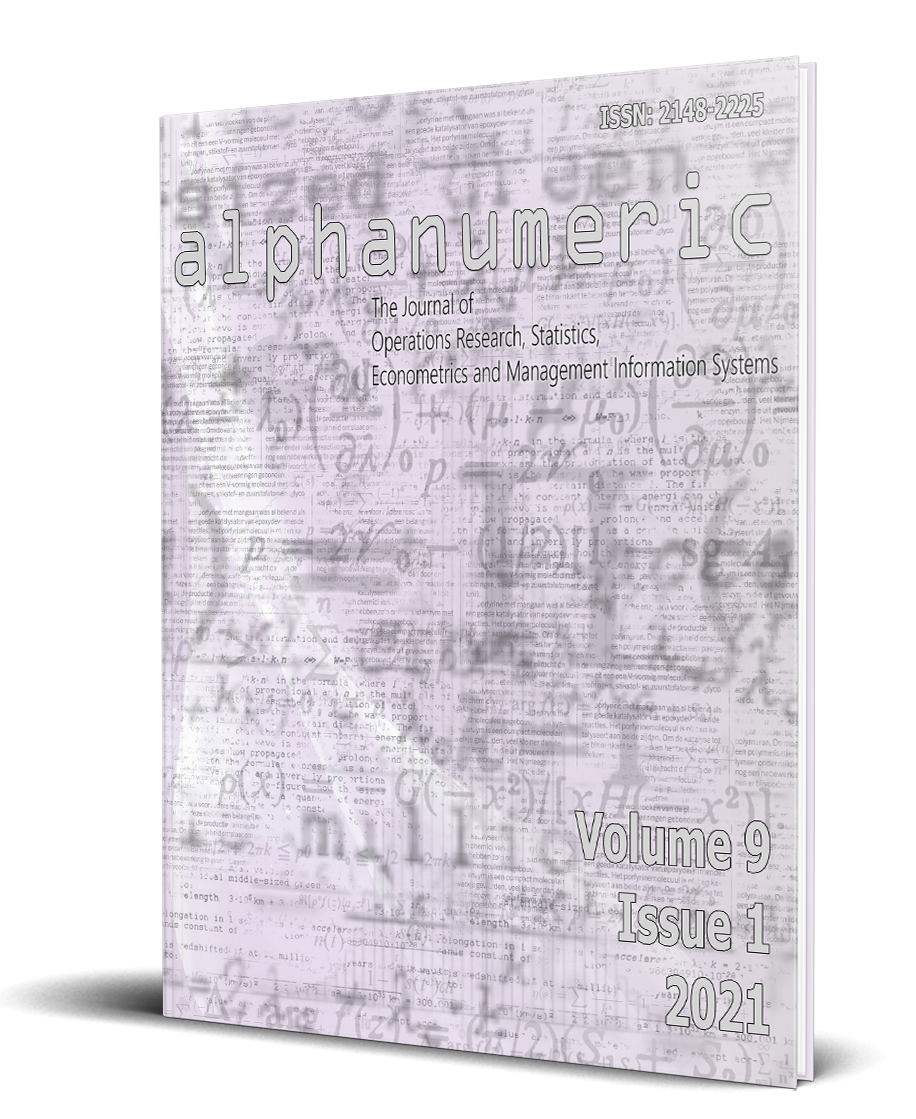
alphanumeric journal
The Journal of Operations Research, Statistics, Econometrics and Management Information Systems
Ground Truth in Network Communities and Metadata-Aware Community Detection: A Case of School Friendship Network
Abstract
Real-world networks are everywhere and can represent biological, technological, and social interactions. They constitute complicated structures in terms of type of things and their relations. Understanding the network requires better examination of the network structure that can be achieved at various scales including macro, meso, and micro. This research is concerned with meso scale for a student best friendship network where sub-structures in which groups of entities (students) take different functions. In this study we address the following research questions: To what extent would NeoSBM as a stochastic process underlie best friendship interaction and in turn ground truth interactions (i.e. reported best friendship)? Do metadata such as gender or class contribute to this understanding? How can one support school managers from a meta-data aware community detection perspective? Our findings suggest that metadata aware community detection can be an effective method in supporting decision-making for class formation and group formation for in and out school activities.
Keywords: Best Friends Network, Community Detection, SBM, neoSBM
Jel Classification: C01
Suggested citation
(). Ground Truth in Network Communities and Metadata-Aware Community Detection: A Case of School Friendship Network. Alphanumeric Journal, 9(1), 49-62. http://dx.doi.org/10.17093/alphanumeric.688660
References
- Allaire, J. (2012). RStudio: integrated development environment for R. Boston, MA, 537, 538.
- Aytac, T. (2015). The relationship between teachers’ perception about school managers’ talent management leadership and the level of organizational commitment. Eurasian Journal of Educational Research, 15(59), 165-180. Bui, T. N., & Jones, C. (1992). Finding good approximate vertex and edge partitions is NP-hard. Information Processing Letters, 42(3), 153-159
- Barabási, Albert-László (2009) “Scale-free networks: a decade and beyond.” science 325, no. 5939 412-413.
- Chen, H., Chiang, R. H., & Storey, V. C. (2012). Business intelligence and analytics: from big data to big impact. MIS quarterly, 1165-1188.
- Chau, M., & Xu, J. (2012). Business intelligence in blogs: Understanding consumer interactions and communities. MIS quarterly, 1189-1216.
- Fortunato, S., & Barthelemy, M. (2007). Resolution limit in community detection. Proceedings of the National Academy of Sciences, 104(1), 36-41.
- Golbeck, J., Gerhard, J., O’Colman, F., & O’Colman, R. (2017). Scaling Up Integrated Structural and Content-Based Network Analysis. Information Systems Frontiers, 1-12.
- Hopkins, M. (2017). A Review of social network analysis and education: Theory, methods, and applications. Karrer, B., & Newman, M. E. (2011). Stochastic block models and community structure in networks. Physical review E, 83(1), 016107.
- Miranda, S. M., Kim, I., & Summers, J. D. (2015). Jamming with Social Media: How Cognitive Structuring of Organizing Vision Facets Affects IT Innovation Diffusion. Mis Quarterly, 39(3).
- Newman, M. E. (2002). Assortative mixing in networks. Physical review letters, 89(20), 208701.
- Newman, M. E., & Girvan, M. (2004). Finding and evaluating community structure in networks. Physical review E, 69(2), 026113.
- Newman, M. E. (2006). Modularity and community structure in networks. Proceedings of the national academy of sciences, 103(23), 8577-8582.
- Riolo, M. A., & Newman, M. E. J. (2019). Consistency of community structure in complex networks. arXiv preprint arXiv:1908.09867.
- Peel, L., Larremore, D. B., & Clauset, A. (2017). The ground truth about metadata and community detection in networks. Science advances, 3(5), e1602548.
- Perdahci, Z. N., Aydın, M. N., Kafkas, K. (2018, October) SBM Based Community Detection: School Friendship Network. Paper presented at the Fifth International Management Information Systems Conference.
- Perdahci, Z. N., Aydin, M. N., & Kariniauskaitė, D. (2017). Dynamic Loyal Customer Behavior for Community Formation: A Network Science Perspective.
- Van Geel, M., Keuning, T., Visscher, A. J., & Fox, J. P. (2016). Assessing the effects of a school-wide data-based decision-making intervention on student achievement growth in primary schools. American Educational Research Journal, 53(2), 360-394.
- Zhang, K., Bhattacharyya, S., & Ram, S. (2016). Large-Scale Network Analysis for Online Social Brand Advertising. Mis Quarterly, 40(4).
2021.09.01.MIS.02
alphanumeric journal
Pages 49-62
Received: Feb. 14, 2020
Accepted: May 6, 2021
Published: June 30, 2021
2021 Kafkas, K., Perdahçı, NZ., Aydın, MN.
This is an Open Access article, licensed under Creative Commons Attribution-NonCommercial 4.0 International License.

scan QR code to access this article from your mobile device
Contact Us
Faculty of Transportation and Logistics, Istanbul University
Beyazit
Campus 34452 Fatih/Istanbul/Türkiye
Bahadır Fatih Yıldırım, Ph.D.
editor@alphanumericjournal.com
+ 90
(212) 440 00 00 - 13219
alphanumeric journal
alphanumeric journal has been publishing as "International Peer-Reviewed Journal" every six months since 2013. alphanumeric serves as a vehicle for researchers and practitioners in the field of quantitative methods, and is enabling a process of sharing in all fields related to the operations research, statistics, econometrics and management informations systems in order to enhance the quality on a globe scale.

